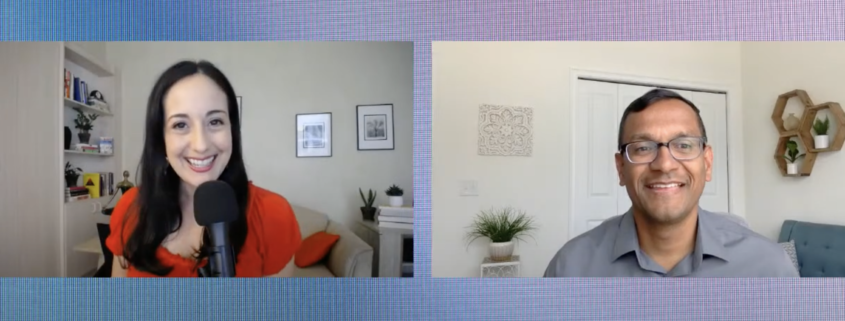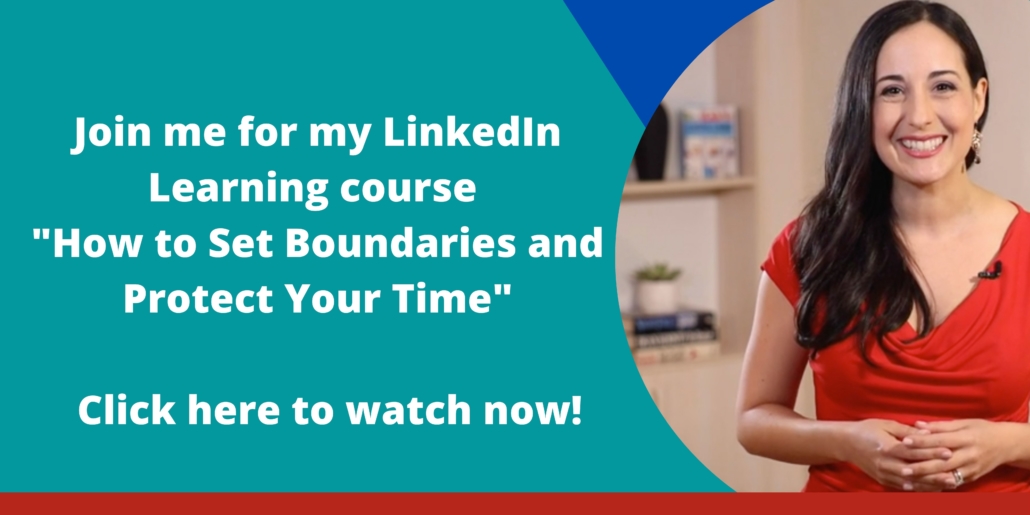The Power of Doing Nothing
___
BONUS FREEBIE: Want even more ways to stay organized, productive and less stressed? Click here to get access to my List-Making Starter Kit. It will boost your efficiency and get you back to doing more of the things you love.
___
You’ve got work to-do lists, home to-do lists, personal to-do lists, returning-to-the-office to-do lists – the list of lists goes on and on. But how often is doing nothing on your to-do list?
It might seem counterintuitive, but adding nothing to your to-do list can help you become more productive.
On the most recent episode on my live-streaming show Inside Scoop, I spoke with Pandit Dasa, author of Closing the Apps in Your Mind and Urban Monk, mindfulness leadership expert, CEO, and former NYC monk – who offered his insight on how doing nothing can help you accomplish everything.
1) Closing the apps in your mind.
This is more than just the title of Pandit’s book – closing the apps in your mind is a metaphor for why meditation is so important. When too many apps are open on your smart device it clutters the machine, slows down its functions, and drains the battery.
And your brain works the same way.
Taking time to breathe and do nothing increases your awareness of your own thoughts, which can help you let negative or unhelpful thoughts pass without judgement.
2) How closing out your apps helps you.
But why is noticing your thoughts and letting them pass so important? Pandit brings up a Psychology Today article which says we have thousands of thoughts in a day and all of them impact us whether we realize it or not. He goes on to say, every three or four seconds our mind opens a new thought tab, and even though we don’t remember all the thoughts, “it still exhausts us.”
Ever find yourself having an imaginary fight or preparing for a situation that might not even happen? Or worrying about something that happened in the past for a little too long? Only to realize you’ve lost a chunk of your day accidentally? That’s what happens when all your apps are open.
It’s easy to get distracted and sucked into a thought without realizing, the same way you can fall into an internet rabbit hole. And that really cuts into your productivity and stress levels, throwing your whole day off.
Pandit explained it perfectly, “A calm mind is a great foundation on which the rest of the day can be built.” And a calm mind makes for a healthier and happier mind and life. Taking the time to exist in the quiet, hear your thoughts, and let them pass, can help you stay focused in the present moment, increase your creativity, productivity, and decrease your stress and irritability.
3) Preparing to do nothing.
It’s easier to talk about meditation than to do it. Pandit recommends putting “yourself on the calendar.” Adding meditation to your to-do list is one of the best ways to ensure you do it (and don’t open more apps on your phone – or in your mind.)
And don’t worry, you don’t need to clear two hours every morning the way Pandit did during his days at the monastery when he was a monk. You just need to find a few minutes at a time that’s convenient for you. For some people first thing in the morning, for some before bed, and for others it’s the middle of the day. I like to meditate in the morning or else I find that I never get to it.
As Pandit reminds me, the most important part of meditation is doing it – not how long or what time you do it. Adding that if we don’t put ourselves on the calendar, “if we don’t prepare to do nothing, we’ll end up doing something, while we’re doing nothing.”
4) Is there a best way to do nothing?
There is no best way to meditate. Pandit suggests trying different ways and sticking with the method that works best for you. You can try taking a walk outside alone or with your pet, closing your eyes and paying attention to your breath before a big meeting, using apps like Calm, or simply putting your device away and looking out the window while eating lunch.
Don’t worry if you don’t feel the difference right away. Meditation is a practice – so it takes time and continuous practice to start noticing the effects. As long as your device is away, you’re focused on your breath. If, like Pandit, you ask your thoughts to “please stay in the waiting room” of your mind for a few minutes, you’re on the right track.
And if you’re not sure how to clear the time for meditation, check out my LinkedIn Learning course, How to Set Boundaries and Protect Your Time, which includes tips on how to prioritize your needs throughout the day.
It may feel a little strange to do at first, but a little bit of “nothing” can go a long way towards increasing your productivity and happiness. And who doesn’t want that?
___
BONUS FREEBIE: Want even more ways to stay organized, productive and less stressed? Click here to get access to my List-Making Starter Kit. It will boost your efficiency and get you back to doing more of the things you love.
___







Leave a Reply
Want to join the discussion?Feel free to contribute!